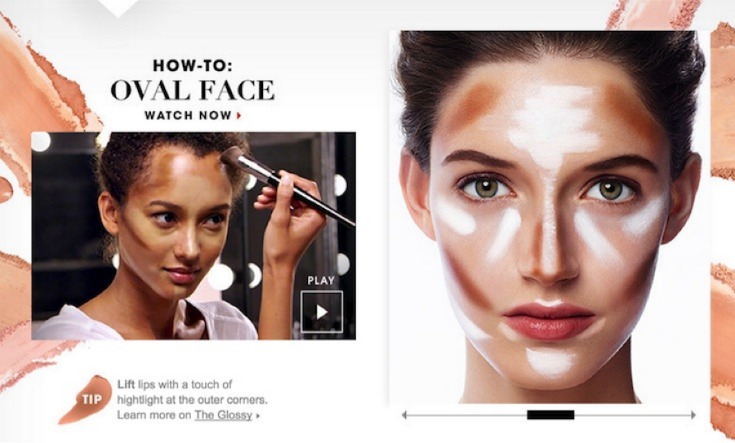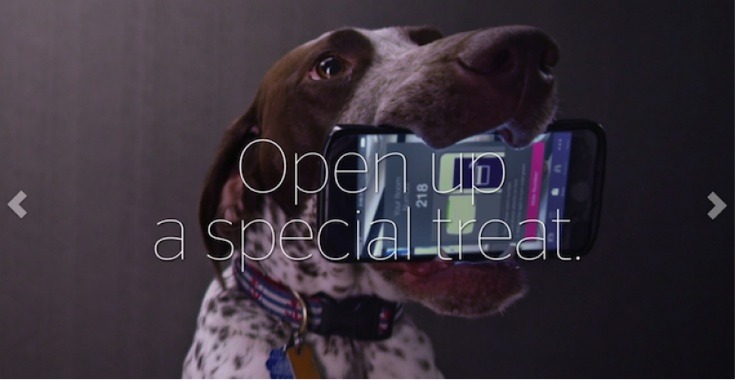In an age where the number of mobile devices (7.5 billion) outnumbers humans (7.3 billion), mobile marketing has become a necessity for brands that want to connect with consumers—at any time—via the medium they engage with most. Total smartphone and tablet activity accounts for a whopping 60% of digital media consumption in the U.S. (desktop is at 40%), and the majority (52%) occurs on mobile apps, according to Comscore.
This monumental shift in consumer behavior opens up a world of possibilities for brand marketing that spans advertising, earned media optimization, app development, and more. While this all sounds good in theory, how to capitalize on the mobile revolution isn’t always obvious, which is probably why most companies lack a clear mobile strategy.
Mobile optimization previously referred to simply ensuring a website was responsive. That’s still important, but many other elements have come into play; for example, social content has to look great on both smartphones and desktop. However, with rising consumer expectations, shortening attention spans, and an increasingly crowded marketplace, tomorrow’s mobile experience must also delight and surprise through more personalized experiences.
When designing mobile customer experience campaigns, marketers need to think about how people experience life in a mobile world. Fundamentally, all it requires is a shift in priorities (from “sell” to “tell”) that puts users’ needs first. And some forward-thinking brands haven’t wasted any time investing in creating innovative, cutting-edge mobile customer experiences.
- Sephora: Personalized Beauty Recommendations
- Starwood Hotels & Resorts: Mobile Check-In & Keyless Room Entry
- 4 Steps to Guide Your Mobile Customer Experience Strategy
- 1. Analyze & Adapt to User Patterns
- 2. Personalize the Experience
- 3. Foster an Emotional Connection
- 4. Build from the Ground Up
- Looking Ahead
Sephora: Personalized Beauty Recommendations

The beauty powerhouse Sephora leads the mobile innovation charge with a range of personalized mobile-based experiences, catering to the digitally savvy millennial set. Acting as a sort of portable “virtual makeup artist,” Pocket Contour Class provides tailored, step-by-step instructions for makeup application.
After uploading a selfie, the technology analyzes a user’s facial shape and categorizes it as either oval, square, round, or heart. The program then provides product recommendations and customized application tips, immersing users in an experience similar to being in a real-life makeup chair.
Sephora has also embraced augmented reality in Sephora-To-Go, which takes digital storytelling in-store. Customers can hover their mobile devices over physical displays to access a range of beauty-related video content, such as interviews with brand founders, product reviews, and tutorials. Scanning individual products in-store will even provide users with instant ratings, promotions, and reviews to guide their purchase.
Starwood Hotels & Resorts: Mobile Check-In & Keyless Room Entry

SPG Keyless, from Starwood Hotels & Resorts, is transforming the hotel experience with the first truly mobile and keyless entry system, which allows guests to use their smartphone as a key.
Available at Aloft, Element, and W Hotels around the world, SPG Keyless represents a ground-breaking turning point in the traditional hotel experience, fundamentally redefining the way guests arrive and check in to their rooms. SPG Keyless – powered by the SPG app – enables guests to bypass the front desk, avoid waiting in line, and unlock their stay with a simple tap of their smartphone or Apple Watch.
4 Steps to Guide Your Mobile Customer Experience Strategy
If the future of mobile is about creating experiences that enhance people’s lives, brand-to-consumer interactions must shift from transactional to personal. Today’s mobile experience should engage users in a fresh digital exchange that takes them on a brand journey aligned with their lifestyles.
From here on out, brands need to “think” mobile to keep up with consumer behavior, but how exactly do they go about doing this? We’ve identified four fundamental steps to guide a successful mobile strategy that puts users first.
1. Analyze & Adapt to User Patterns
Mobile is no longer merely a channel; it’s a behavior. But apps typically fall short because companies are unenlightened with regard to what their customers want, need, and expect from a mobile experience. Strengthening mobile strategy begins with one key step: understanding the user.
To succeed in mobile, marketers must use the data and technology at their fingertips to identify individual motivations, needs, and patterns. Studying consumer behavior highlights key brand insights, illuminating fresh mobile opportunities that can translate to a user-tailored, experience-based mobile strategy.
2. Personalize the Experience
Engagement is key. If a mobile solution doesn’t address user needs, it won’t create a lasting impression, and abandonment will escalate. Marketers need to create seamless, intuitive experiences that adapt to consumers who are interacting with brands “on-the-go.”
Sociographic, demographic, and behavioral data allow marketers to personalize messaging; for example, they can enhance meaningful user engagement with locally and contextually relevant features. Sephora-To-Go’s “virtual beauty reality” and Home Depot’s “aisle location” features couldn’t be more receptive to their shoppers’ needs.
This kind of personalization builds a unique experience around the consumer that makes them feel as though they really matter to the brand.
3. Foster an Emotional Connection
Brand “experience” (versus mere branded messages) exerts the biggest influence over how consumers identify with brands, and it encompasses all aspects of the brand journey. It’s the sum of each of the consumers’ interactions with a brand, building lasting impressions and memories.
Imagine walking into a store and having the sales assistant know your name and pant size (based on your most recent purchase), and suggest the perfect shirt to go with it.
Infusing your mobile touchpoints with personal details such as these is particularly powerful in triggering that warm, fuzzy feeling typically associated with face-to-face interaction. Quite simply, it makes consumers feel special!
And a powerful mobile experience not only enables users to achieve tasks more efficiently; it creates an emotional bond between brand and consumer. Enhancing functionality with a tech-driven human experience that’s new, exciting, and different to what users already know will cultivate a lasting brand affinity.
Starwood’s mobile check-in may be a practical, human-free transaction, but what really counts is that it delivers the feeling of a remarkable, service-driven exchange.
4. Build from the Ground Up
Amid the “mobile enablement” sprint, most organizations jump to roll out existing applications on mobile devices by adjusting display size, optimizing the shopping cart, and enabling a mobile-friendly transaction. Sure, these are all necessary attributes, but this approach doesn’t provide a complete, end-to-end mobile experience.
Think “ground-up” versus “add-on,” or intertwining practical functionality with user needs for a streamlined, immersive journey.
Of course, there’s no one-size-fits-all model with which to create mobile experiences. You can enhance or refresh an existing mobile offering with personalization features (such as push notifications and product recommendations), but there’s nothing truly unique or immersive about that. Genuine innovation and response to user needs requires a “from scratch” mobile design approach (and investment).
Looking Ahead
It’s a mobile world out there, and the experiential possibilities are as unlimited as a marketer’s imagination. No longer is the mobile channel (and strategy) a mere marketing afterthought; it’s a juggernaut unto itself that empowers brands to enhance users’ lives around the clock.
The ability to connect with consumers through the palm of their hands provides an exciting prospect for what lies ahead, but it’s time to evolve beyond “appification” (creating apps around services), and invest in the mobile experience.
A solid strategy requires taking a step back to gain a big picture that identifies and balances the goals of an organization with user needs, routines, and aspirations. Trends to watch include location-based services, wearable technology, augmentation, and the Internet of Things.
As far into the future as the eye can see, mobile customer experiences will continue to be one of the cornerstones of enterprise brand marketing. The question now is: can brands think big enough to truly stand out?
What’s your (mobile) brand customer experience capable of?
About the Author: Julia Ingall works in the heart of NYC’s digital advertising space, where she creates content for brands and publishers spanning tech, beauty, real estate and travel… in between random urban adventures.




